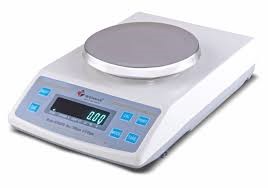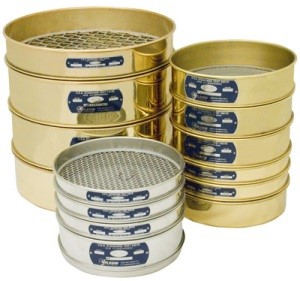Flakiness and Elongation Index of Aggregate
1. objective
Particle shape and surface texture influence the properties of freshly mixed concrete more than the properties of hardened concrete. Rough-textured, angular, and elongated particles require more water to produce workable concrete than smooth, rounded compact aggregate. Consequently, the cement content must also be increased to maintain the water-cement ratio. Generally, flat and elongated particles are avoided or are limited to about 15 % by weight of the total aggregate.
2. Apparatus required
3. reference
IS 2386(Part 1):1963 (Reaffirmed 2021)Methods of Test for Aggregates of Concrete- Particle Size and Shape.
4. procedure
- 1. Sample:A quantity of aggregate shall be taken sufficient to provide the minimum number of 200 pieces of any fraction to be tested.
-
2. Sieving:The sample shall be sieved with the sieves specified in Table 1:
Size of Aggregate thickness (mm) Thickness Gauge * (mm) Length Gauge ** (mm) Passing through IS Sieve Retained on IS Sieve 63 50 33.90 - 50 40 27.00 81.0 40 31.5 21.50 64.4 31.5 25 16.95 - 25 20 13.50 40.5 20 16 10.80 32.4 16 12.5 8.55 25.6 12.5 10 6.75 20.2 10.0 6.3 4.89 14.7
* This dimension is equal to 0.6 times the mean Sieve size
** This dimension is equal to 1.8 times the mean Sieve sizeTable 1 : Dimensions (Length and Thickness) of Gauges
- Separation of Flaky material- Each fraction shall be gauged in turn for thickness on a metal gauge of the pattern shown in Fig. 3, or in bulk on sieves having elongated slots. The width of the slot used in the gauge or sieve shall be of the dimensions specified in co1. 3 of Table 1 for the appropriate size of material.
- The number of pieces passing the appropriate gauge in each size fraction shall be counted separately. The total mass of each size fraction of the sample also shall be determined.
- The mass of pieces passing the appropriate gauge in each sieve fraction shall be calculated as a percentage of mass of the total number of pieces in each fraction (x) . The mass of total number of pieces in each sieve shall then be calculated as a percentage of the total mass of the whole sample that is the sample which is retained on 6.3 mm sieve (y). The weighted percentage of the mass of the pieces passing the appropriate gauge in each sieve fraction shall then be calculated by multiplying 'x' by 'y'.
- The total amount passing the gauge shall be weighed to an accuracy of at least 0.1 percent of the weight of the test sample.
- The Flakiness Index is the total weight of the material passing the various thickness gauges or sieves, expressed as a percentage of the total weight of the sample gauged.
- Separation of Elongated Material- Each fraction shall be gauged individually for length on a metal length gauge of the pattern shown in Fig. 4. The gauge length used shall be that specified in co1. 4 of Table 1 for the appropriate size of material.
- Weighing of Elongated Material :The total amount retained by the length gauge shall be weighed to an accuracy of at least 0.1 percent of the weight of the test sample.
- The elongation index is the total weight of the material retained on the various length gauges, expressed as a percentage of the total weight of the sample gauged.
5. observation and recording
| Passing through IS Sieves(mm) | Retained on IS Sieves (mm) | Flakiness Gauge (mm) | Weight Passing on Flakiness Gauge (g) | Percentage Weight Passing (%) |
|---|---|---|---|---|
| 63 | 50 | 33.90 | ||
| 50 | 40 | 27.00 | ||
| 40 | 31.5 | 21.50 | ||
| 31.5 | 25 | 16.95 | ||
| 25 | 20 | 13.50 | ||
| 20 | 16 | 10.80 | ||
| 16 | 12.5 | 8.55 | ||
| 12.5 | 10 | 6.75 | ||
| 10 | 6.3 | 4.89 | ||
| Total |
Table 2 : Recordings for Flakiness Index
| Passing through IS Sieves(mm) | Retained on IS Sieves (mm) | Elongation Gauge (mm) | Weight Retained on Elongation Gauge (g) | Percentage Weight Retained (%) |
|---|---|---|---|---|
| 63 | 50 | -- | ||
| 50 | 40 | 81.00 | ||
| 40 | 31.5 | 64.4 | ||
| 31.5 | 25 | -- | ||
| 25 | 20 | 40.50 | ||
| 20 | 16 | 32.4 | ||
| 16 | 12.5 | 25.6 | ||
| 12.5 | 10 | 20.2 | ||
| 10 | 6.3 | 14.7 | ||
| Total |
Table 3 : Recordings for Elongation Index
6. calculation
-
The Flakiness Index on an aggregate is =
Total weight passing Flakiness Gauge x 100 / Total weight of test sample =_________(%) -
The Elongation Index on an aggregate is =
Total weight retained on Elongation Gauge x 100 / Total weight of test sample =________(%)



